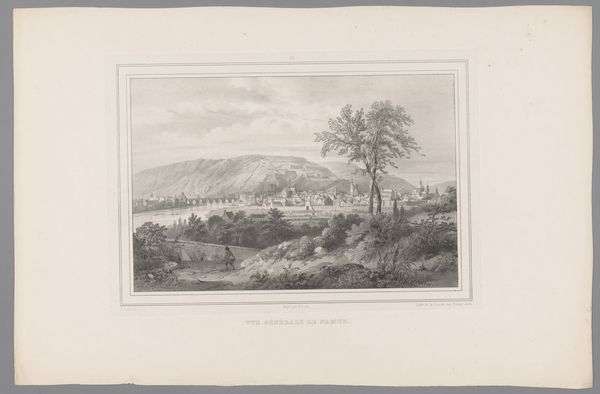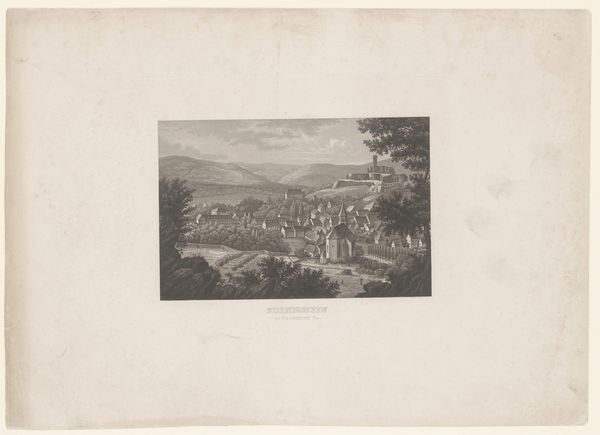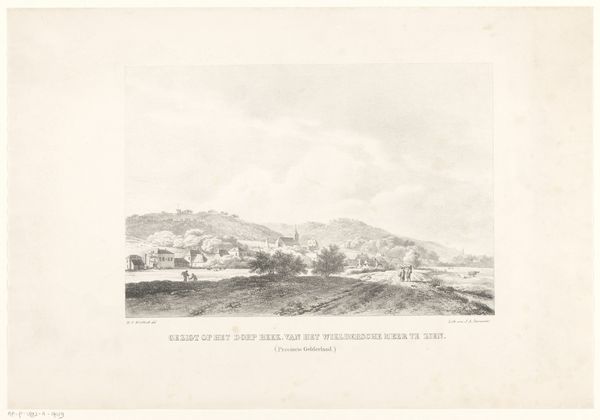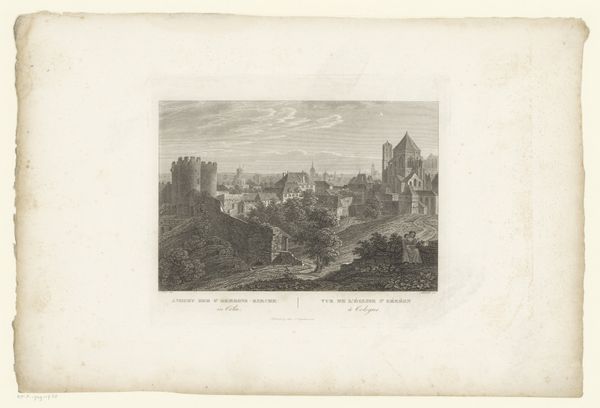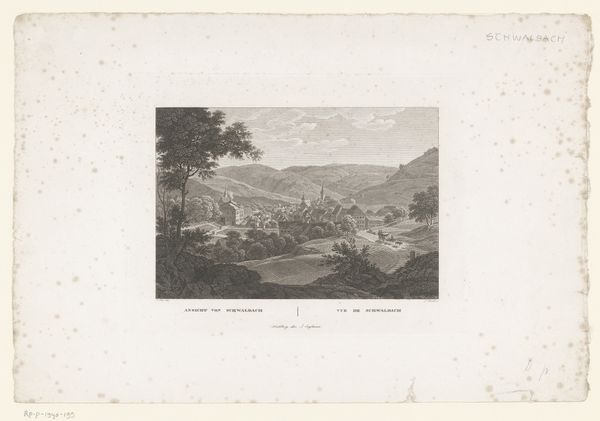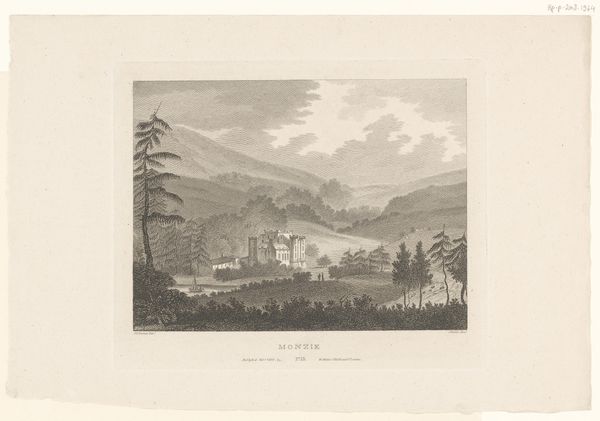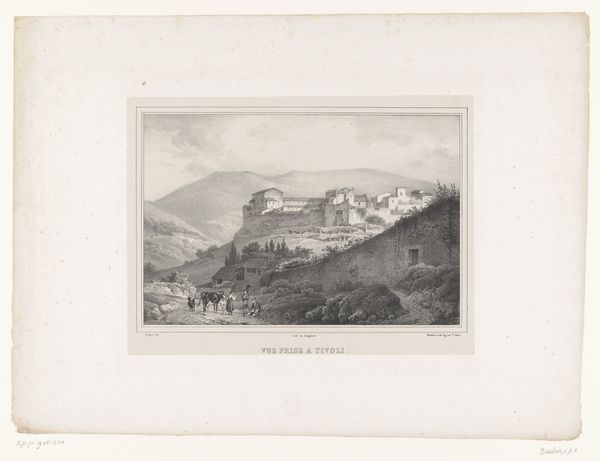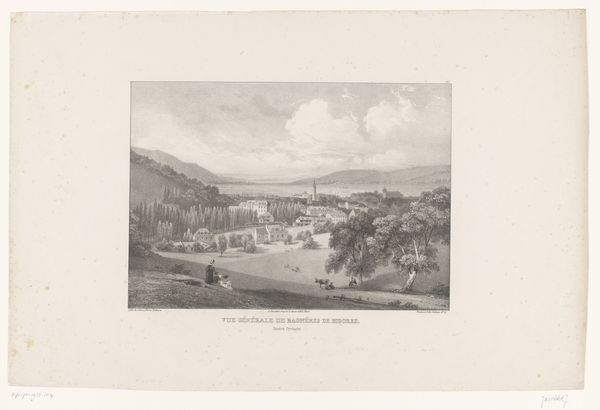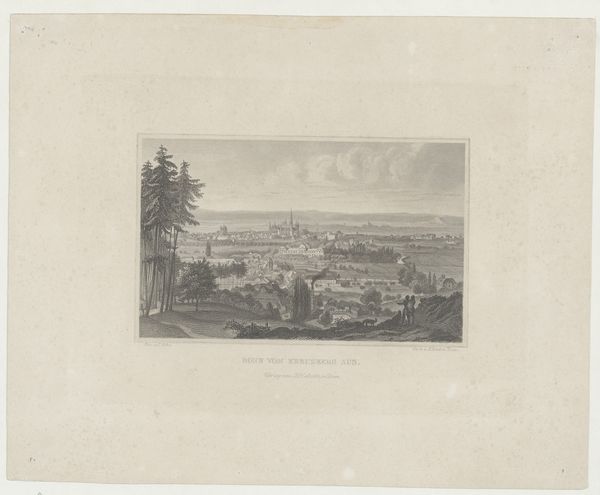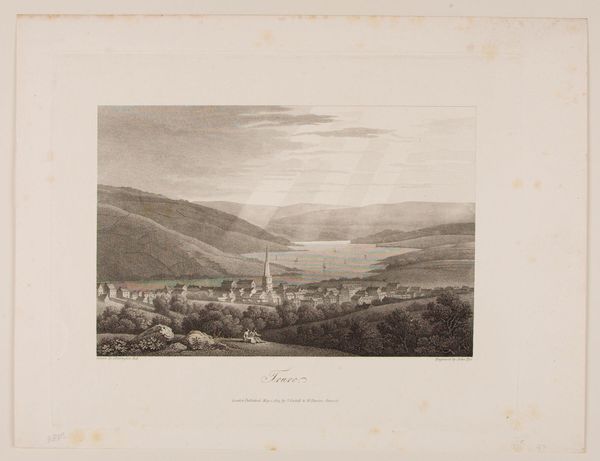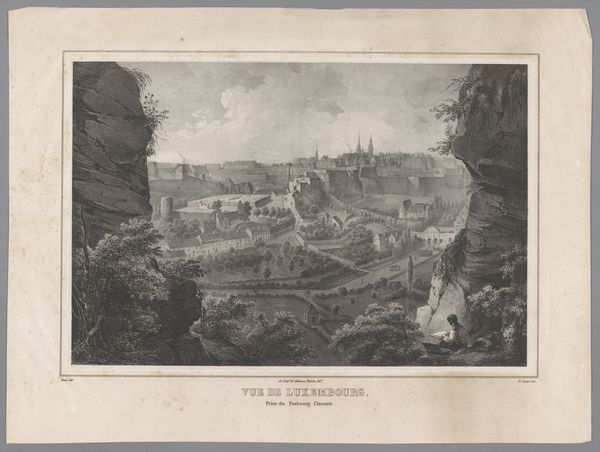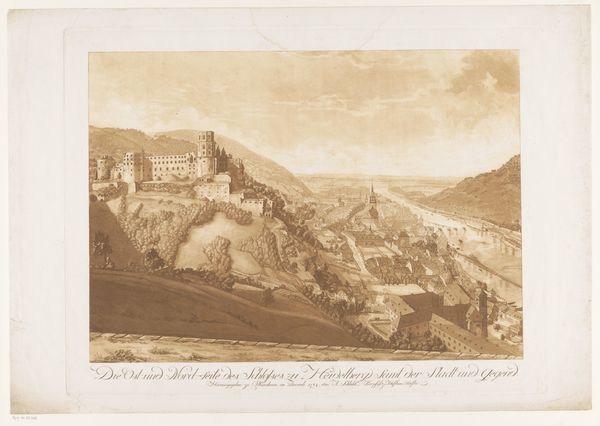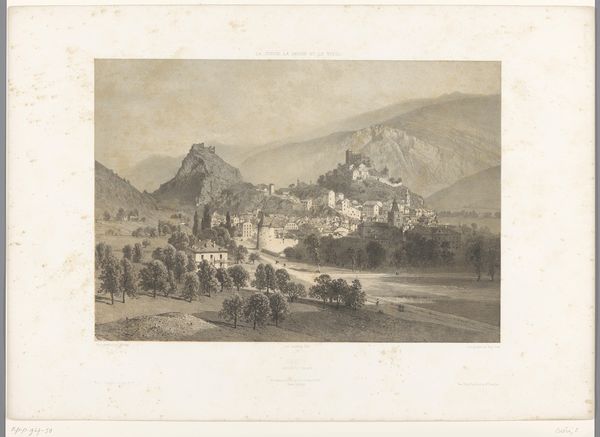
Dimensions: height 220 mm, width 712 mm
Copyright: Rijks Museum: Open Domain
Carl Friedrich Würthle's monochrome panorama captures Heidelberg from Molkenkur, presenting a landscape dominated by the town's castle ruins perched above the town, with a lone building atop a distant peak. The ruin, an icon, speaks of time's passage, mirroring the cyclical nature of human endeavor. We see this symbol echoed across centuries: from Piranesi's etchings of Roman ruins that captured the melancholic grandeur of decay, to Romantic paintings that used ruins as metaphors for human life and mortality. The ruin is a powerful symbol, emotionally resonant because it engages our subconscious understanding of the world’s impermanence. Like a dream, the ruin holds layers of meaning. It reminds us that civilizations rise and fall, and that even the most imposing structures will eventually return to dust. Yet, in their decay, they possess a stark beauty, bearing testament to history. This symbol is forever imprinted in our memory and experienced in different moments.
Comments
No comments
Be the first to comment and join the conversation on the ultimate creative platform.

